Creating the future of food delivery takes empathy, innovation, and an appetite for complex logistical challenges.
UberEATS is on a mission to make eating well effortless for everyone, everywhere. Our service connects customers to Uber-speed delivery from restaurants in over 70 cities around the world. We give people more options when choosing how to eat. We help restaurants reach more customers and build their businesses. We give delivery partners another way to earn good money, with or without a car. And of course, we weave everything into the smooth, magical experience people expect from Uber.
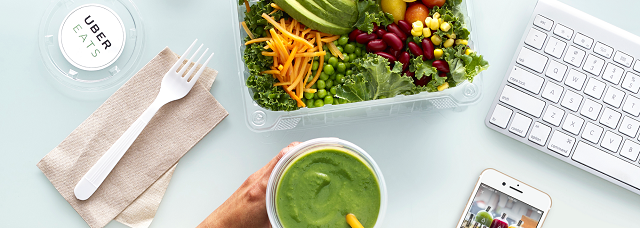
We’re designing improvements to the way people find their food. It’s an exciting challenge. Smartphones have only been around for a decade, but people have been preparing and selling food for millennia. On UberEATS, we get to combine brand-new technology with the very old, very fundamental, very universal activity of eating and enjoying cuisine.
Designers on the UberEATS team love food culture, logistical challenges, and the demands of a fast-growth startup. We take pride in our ability to move quickly, build empathy with our customers, and make complex services run smoothly. Our designs reach many different types of people with very different needs, but the same approach guides our mission to make eating well effortless at any time, for anyone.
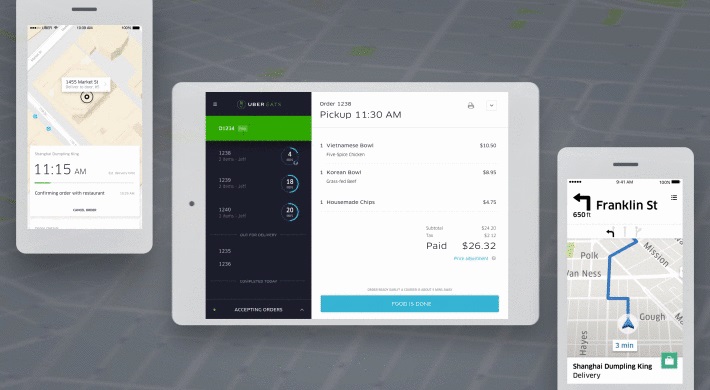
We Immerse Deeply
UberEATS operates in over 80 cities globally, each with its own food culture, city infrastructure, and unique set of logistical challenges. Our customers include delivery partners wanting flexible ways to earn money, restaurant workers interested in improving and expanding their businesses, and everyday people looking for a bite to eat. The service connects these different types of people in experiences that are both digital and physical. Designers on the team arrange the elements of each screen, but also influence how people and objects move about the real world.
To understand all our different markets and how our products fit into the physical conditions of each city, we constantly immerse ourselves in the places where our customers live, work, and eat. Sitting in our offices in San Francisco or New York, we can’t truly understand the experiences of a person on the streets of Bangkok or London. We need to go there, move about the city, experience the food culture, and watch how people use the things we’ve designed.
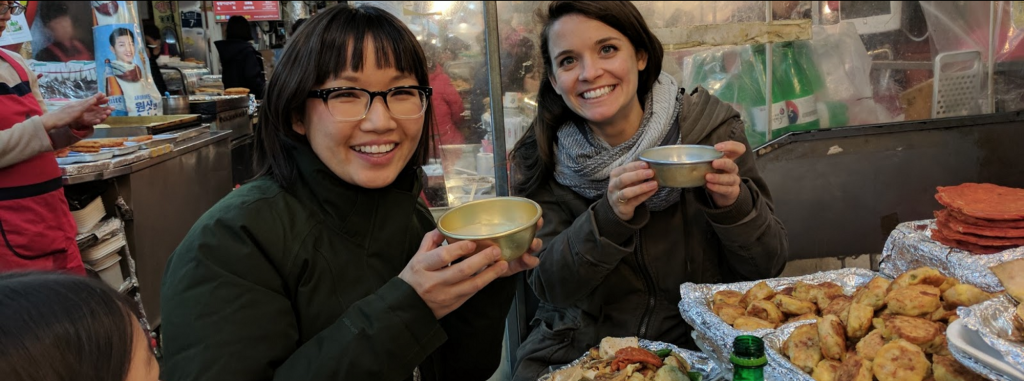
The Walkabout Program forms the foundation of our immersion initiatives. Every quarter, designers visit an UberEATS city and dive deeply into that market. They learn the city’s food culture. They study the transportation and logistical infrastructures. They interview delivery partners, restaurant workers, and consumers. They eat and eat and eat. Upon return, they share their learnings with the entire team. Each visit helps build a comprehensive understanding of our different markets and customers.
Order shadowing allows us to observe our designs in use. We follow partners on deliveries, visit restaurants during the rush, and sit in people’s homes while they order dinner. Watching our products in the wild helps us better understand the needs of our customers, how well our designs address those needs, and and what challenges exist in the real world that we can’t replicate in the office.
Fireside chats give us the opportunity to hear from customers directly. As much as possible, we invite delivery partners, restaurant workers, and consumers into our offices to discuss their experiences with UberEATS. These sessions provide a lightweight way to empathize with users and bridge the gaps between deeper immersion activities like Walkabouts and order shadows. And while we don’t have fireplaces in the Uber offices (yet), we do take advantage of the plethora of looping fireplace videos on YouTube.
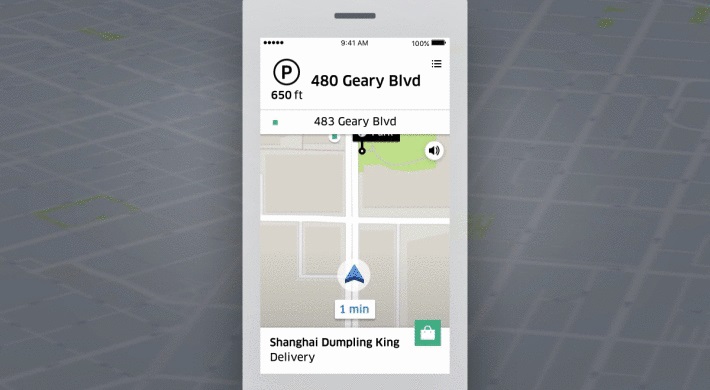
We Iterate Quickly
Our products are new, complex, and require the tight coordination of people and objects in the real world. It’s impossible to replicate these conditions inside our offices, so we test designs as quickly as possible in the real world. We observe and iterate as soon as we identify opportunities to improve the design.
Speed is crucial. Our business is a marketplace that needs to quickly reach critical mass to provide value to each of our different customers. Delivery partners and restaurant owners need to receive enough orders from consumers to earn good money. Consumers need a wide range of restaurants to choose from and a large network of delivery partners to deliver the food quickly. We need to build products quickly so that our customer base can grow quickly. Swift iteration allows us to move fast and ensure we get the design just right.
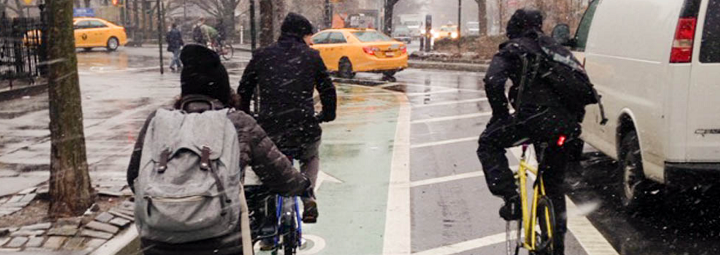
Rapid field testing helps us see how customers respond to designs in progress. Our researchers and designers take mock-ups and prototypes into restaurants, inside delivery vehicles, and into people’s homes to test our products in the places they’ll be used. Getting out of the office is essential when designing for real-world problems like finding parking, delivering to large apartment buildings, or speeding up workflows in the kitchen during the dinner rush.
A/B testing lets us simultaneously test multiple versions of a feature and quickly determine which performs the best. We use this method when designs have clear success metrics that we can measure with data analytics. This often means completing a specific task like rating an order or choosing a dish recommendation. Shipping multiple options at once rather than iterating on one version sequentially allows us to find the best performing design faster.
Operations team experiments test concepts and designs in a single city to quickly gauge their opportunity. Our colleagues on the ground in each market interact closely with our customers, have great ideas for products, and aren’t afraid to hack together a quick experiment to prove out the value. The first versions of features like the “Most Popular Items” category in our UberEATS menus started as an operations team experiment in Toronto before later iterations were released to all users in all cities.
![]()
We Innovate Constantly
Our app is little more than a year old and just beginning to innovate on the experience of restaurant delivery. Technology makes things easier for everyone involved, but the process works the same way it has for decades: People order food the moment they need it, delivery partners deliver one order at a time, and restaurants provide the same menu options for delivery as they do for dining in.
We see a huge opportunity to innovate and evolve from the traditional model of food delivery. We’ve started by providing driver partners the option to do both rides and deliveries so they can stay busier and earn more money while online with Uber. We designed a restaurant sales dashboard to let chefs monitor the demand of individual dishes and tweak recipes to improve their menus. And we created the “Under 30 Minutes” menu for people who want to leverage the speed of Uber to get food fast. The design team constantly seeks to generate innovations like these and provide new ways for people to eat, for restaurants to run their businesses, and for delivery partners to earn money.
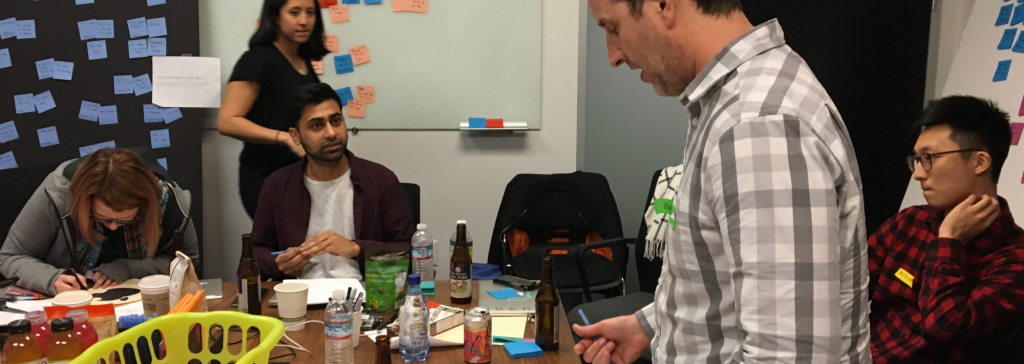
Innovation workshops stimulate novel solutions to the problems and opportunities we address on UberEATS. When we need to develop a new idea, we gather representatives from other disciplines and use design thinking methodology to look at our challenges in new ways. Together we research and share experiences from similar services to generate insights and inspiration, then run creative exercises to generate a wide range of ideas. These structured brainstorms shake up the mindset of the team, push our creativity, and spawn innovative ideas like pooled deliveries and ‘virtual’ restaurants only available on UberEats.
Conferences, meetups, and talks related to the future of food keep us informed about the latest trends. Members of the team regularly attend events related to cuisine, cooking, food technology, and the restaurant industry. They report back their learnings to the team and we all discuss how those insights relate to UberEATS. These share outs often generate ideas for new products, services, and features.
Field trips to food innovators show us how other companies are shaping the future of food. We’ve visited IOT startups developing connected cooking products, artisanal farms mixing new technology with old farming expertise, and companies that allow chefs to beta test menu concepts before opening new restaurants. Seeing how others are innovating in similar problem spaces helps us think differently about ours and generate new ideas about our products and services.
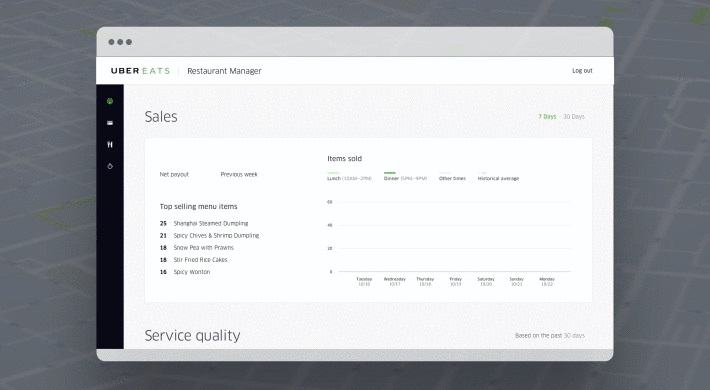
Immersion, iteration, and innovation power the UberEATS design team on our mission to make eating effortless. Our approach allows us to solve complex logistical challenges with brand new technology that complements people’s deep connection to food.
The results have been gratifying. In just a short time, we’ve expanded to over 80 cities worldwide. We’ve provided restaurants with new ways to reach customers and build their businesses. We’ve created another, often easier option for delivery partners to earn money with Uber. We’ve invented new ways for hungry people to find and enjoy the food they love. As designers, we get to solve complex problems, positively affect people’s lives, and shape the future of eating.
Source: Medium




